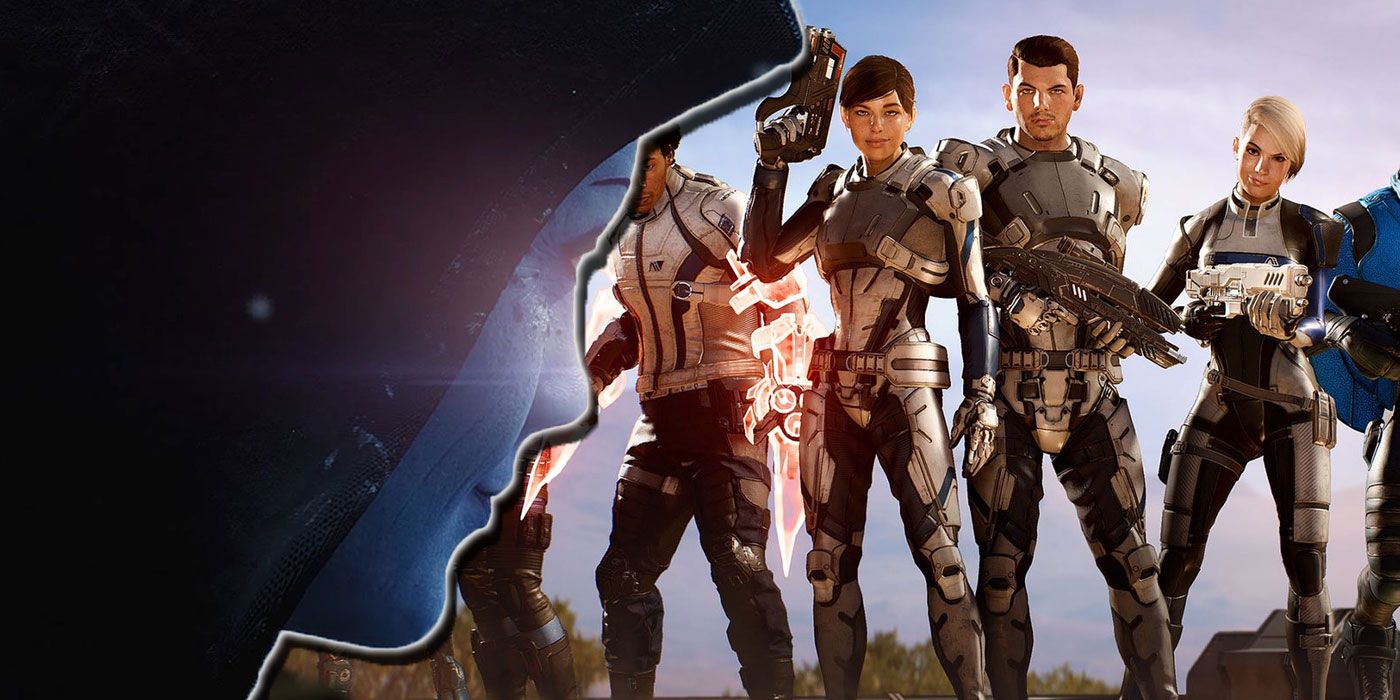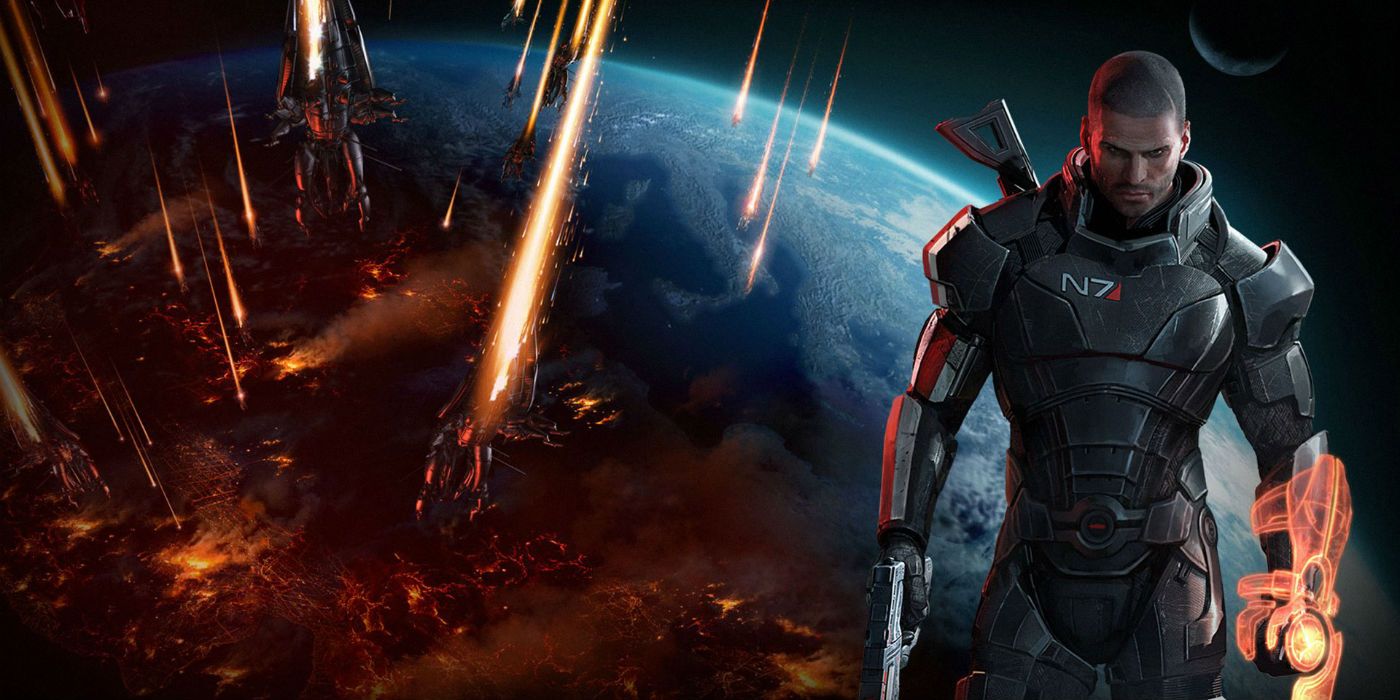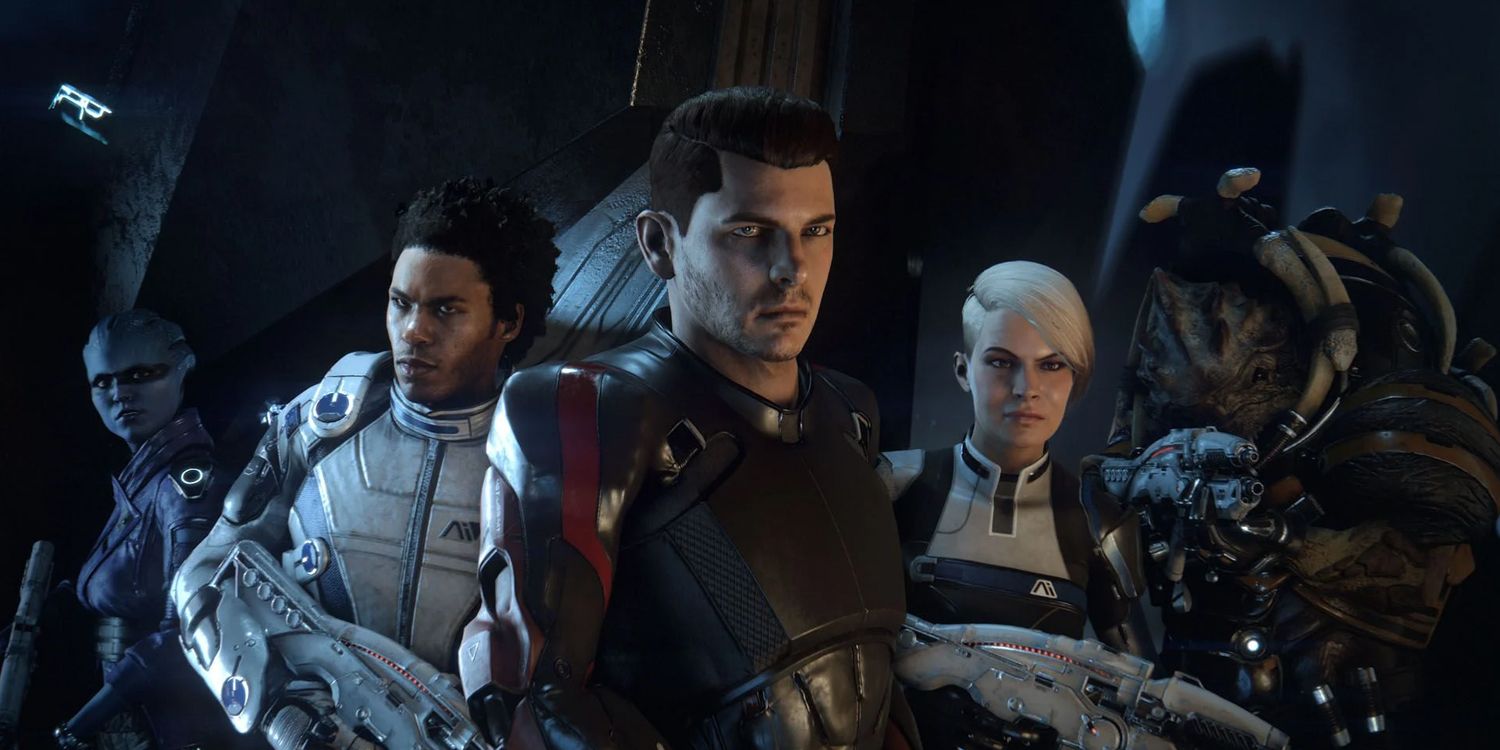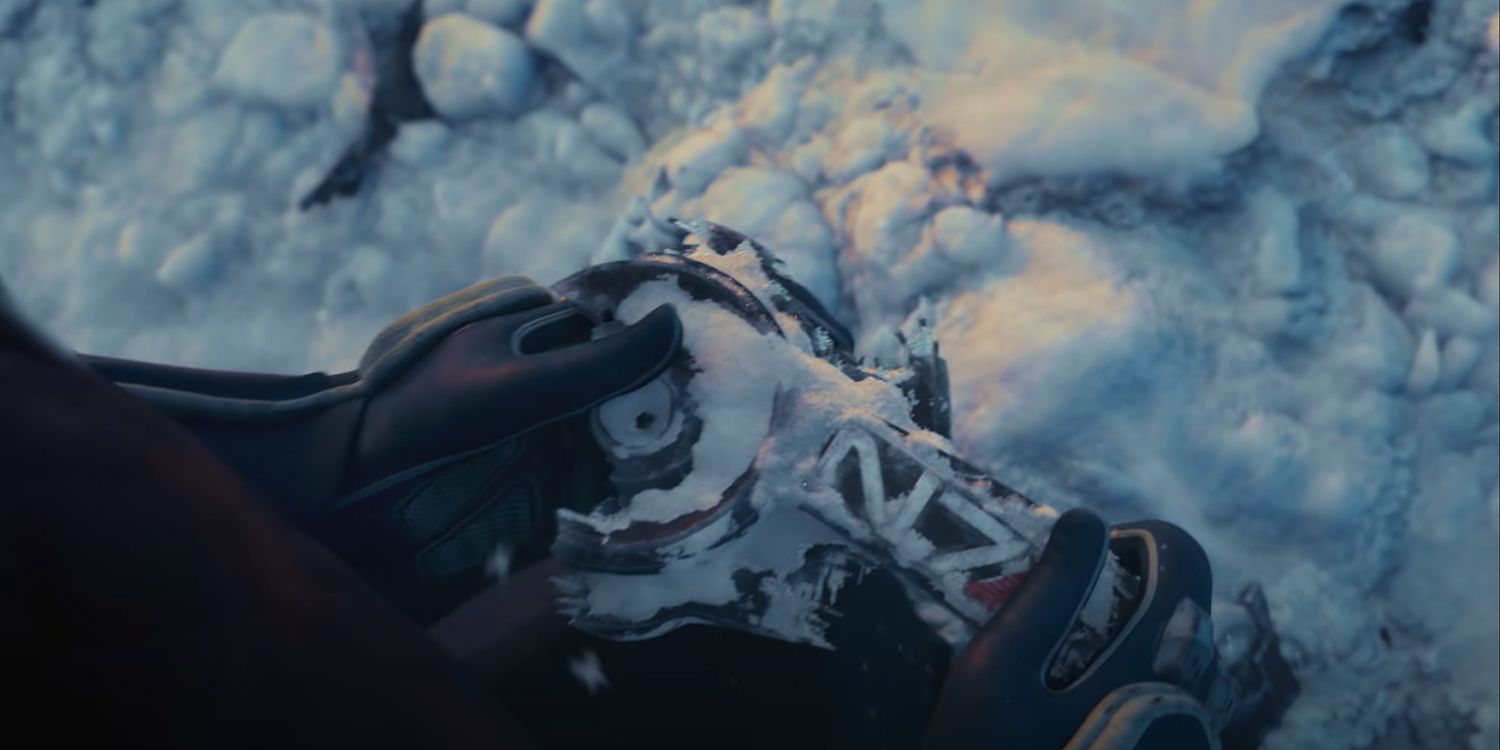Now that Mass Effect: Legendary Edition, a collected remaster of the first three entries in the epic sci-fi RPG series, has finally landed, all eyes are turning to the next brand new Mass Effect entry. The fate of the franchise’s future has long been under speculation since the lukewarm and underwhelming reception of Mass Effect: Andromeda, a spin-off intended to launch a new era for the series. Plans for a direct sequel to Andromeda fizzled out, but the trailer for this new Mass Effect showcased during 2020's Game Awards broadcast deliberately hinted that it will be connected to both the original trilogy and Andromeda.
Fans have been breaking down the Mass Effect teaser on social media and have received confirmation from BioWare devs that their suspicions are correct. The trailer's opening shot shows two galaxies, our Milky Way and the (relatively) nearby Andromeda galaxy. This has huge ramifications for what the new entry will focus on, and the trailer may have also hinted at how they are connected as well.
The original Mass Effect trilogy was focused on the adventures of Commander Shepard, a human who becomes pivotal in shaping the fate of the Milky Way. Interstellar travel in the Milky Way was accelerated by the discovery of Mass Relays, a network of gargantuan alien devices capable of hurtling vessels across the vast distances of space. No one knew who built the Mass Relays, but when humanity discovered them, they found themselves thrust into a larger society comprised of many sentient alien races.
As the youngest member of the interstellar community, humanity had a lot to prove and Commander Shepard became one of humanity’s chief representatives. The Mass Relay Network centered on a massive structure called the Citadel, built by the same mysterious aliens responsible for the relays. The Citadel was the center of civilization in the Milky Way, and the original Mass Effect trilogy revolved heavily around the politics involved in the Human race earning their place there and attaining a position on the Citadel’s ruling council.
Originally, many believed the relays and the Citadel were the results of the efforts of the long-deceased Protheans. But Shepard uncovered a far more sinister truth and a threat that could annihilate all life in the galaxy. The relays and Citadel were actually built by a sinister race of sentient machines the Protheans called Reapers.
The Reapers, each large enough to serve as a spacecraft, built the network and Citadel to be intentionally found. When enough sentient races had achieved sufficient technological advancement, the Reapers would return from the darkest reaches of space to destroy all advanced life, leaving only the primitive to survive and repeat the cycle. The Reapers were the cause of the Prothean’s destructions millennia before the original trilogy. Commander Shepard led a crusade to ensure this pattern of death and destruction wouldn’t be repeated.
Mass Effect 3 presented multiple possible conclusions to the war, but regardless of Shepard’s choices, the Reapers are defeated using a superweapon called the Crucible, designs for which dated back to the first species eradicated by the Reapers and improved upon in each passing cycle. Humanity would be the first to successfully build the Crucible, which released energies that damaged or destroyed the Mass Relays, the severity of which depended on the ending chosen.
Little is known about the long-term effects of Shepard’s decision, save that life continued to exist and Shepard's actions have grown into legend. This ending left the franchise in an odd place, with little chance for a direct sequel to occur that would resemble the Mass Effect universe fans had come to know. That turned out to be the chief influence over deciding the direction of future entries that resulted in Mass Effect: Andromeda.
Andromeda's story really begins between Mass Effect 2 and 3 and revolves around the Citadel races' joint-colonization effort. The Andromeda Initiative intended to launch six massive ships called Arks on a one-way trip to the neighboring galaxy, though only four are known to have launched (the arrival of the fifth Ark was planned for DLC that was never produced). The Arks’ occupants were held in suspended animation, only to be awoken upon arrival. Of course, things do not go as planned.
Players assume the role of Ryder, a colonist who takes on the role of Pathfinder following their father's death and is saddled with the responsibility of finding habitable worlds to settle on. Arriving in the year 2819, roughly 630 years after the original trilogy, Ryder discovers that none of the worlds the Andromeda Initiative planned on settling turned out to be what they needed. In addition, when Ryder arrived in the Heleus Cluster of Andromeda, they found themselves embroiled in a war between two native alien races, the wary Angara and the vicious Kett.
Ryder’s Ark can only make contact with one of the other Arks, the flagship Nexus, which was designed to be the base of operations for the Andromeda Initiative and intentionally modeled off of the Citadel. The Nexus is in disarray, undersupplied and understaffed due to the missing Arks and almost on the brink of collapse. Ryder becomes involved with helping the Angara resistance against the Kett while searching for the missing Arks and habitable worlds to colonize.
Ryder discovers a new synthetic race called the Remnants built by the long-deceased Jardaan. The Remnants were caretakers of the Jardaan’s massive terraforming technology. They laid mostly dormant since the Scourge, an apocalyptic event that released energy that destroyed the Jardaan and was the reason why the Andromeda Initiative’s intended colony worlds were damaged beyond habitation. Ryder then must face the Archon of the Kett in a battle to secure Meridian, a planet-sized device capable of activating the Remnant vaults and kickstarting the terraforming of many worlds.
Ryder defeats the Archon and settles humanity on Meridian, activating it and truly beginning the Andromeda Initiative's colonization efforts. Had Andromeda been a larger commercial and critical success, subsequent sequels would have followed Ryder’s continued efforts. But that was not the case, and the entire Mass Effect has been in limbo until now.
By showing both galaxies in the new trailer, it’s clear that this new, separate Mass Effect game will seek to unify both arms of the franchise, which isn't unthinkable. If the new game is set after Andromeda, then centuries have passed, perhaps enough that Milky Way could restore the Mass Relays and reconnect with one another. They may have even advanced enough that travel between the two galaxies will no longer require over half a millennium and suspended animation to accomplish.
Narratively, there is the possibility of connecting the games through pre-existing characters, and the trailer may have already hinted at who could return. The trailer shows a woman digging through the snow, finding a fragment of armor with the N7 logo on it, the elite designation of Commander Shepard. The woman is revealed to be an Asari, a race of mono-gendered and extremely long-lived aliens. Asari have been known to live over a thousand years, and the one shown in the trailer looks suspiciously like Liara T’Soni, one of Shepard’s companions from the original trilogy.
Give she was just over 100 years old in the original trilogy, it’s entirely plausible that Liara would still be alive during the events of Andromeda. She was also an archeologist and scientist who eventually wielded significant influence in the Milky Way after taking on the mantle of the Shadow Broker from her predecessor. There are so many unknowns to this recently announced game, but a character like Liara would be an ideal choice to help bridge the two Mass Effect galaxies and help forge a new path forward for the beloved franchise.




